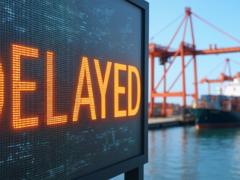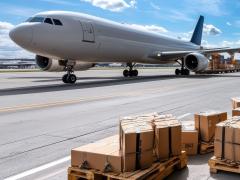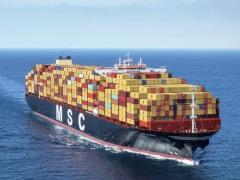Uncertainty and disruption in global supply chains are here to stay, necessitating enhanced resilience readiness among ocean carriers and their clients, Peter Sand of Xeneta told Freight News in an exclusive interview.
Reacting with the requisite responsiveness against current odds – Houthi attacks in the Red Sea and the tariff increases of US President Donald Trump’s trade crusade – is easier said than done, the chief analyst of the maritime intelligence consultancy said.
Moreover, whereas it was generally hoped that the industry would settle down after Covid, post-pandemic risk has become the norm.
“For several years, we have cautioned that political and geopolitical risks will come about with higher frequency and increased severity. We said that already back in 2019,” Sand pointed out.
Whether it’s containerised cargo, automotive sea freight or energy shipping, Xeneta anticipates volatility across the spectrum for some time, he added.
But, if there’s one aspect of disruption currently rippling across the sea sector of logistics, it’s the ongoing situation in the Red Sea, according to Sand.
The impact it has on supply lines, capacity adjustments, freight rates, trade relationships and market access will continue to challenge shippers and carriers in the near future.
“We don’t see this situation changing any time soon. And, yes, although resilience is necessary, there is always a cost.”
For lines, this means fleet and network versatility – evidenced in the kind of capacity expansion seen due to rerouting around the Cape of Good Hope as carriers began avoiding the Suez Canal because of risk in the Red Sea.
The resulting freight rate volatility on the back of longer EU-Asia rotations, compounded by tariff uncertainty, illustrates how important it has become for shippers to reconsider origins, destinations and diversifying commercial goods.
“Shippers might ask themselves whether they want to be in China for goods coming from North America or vice versa. And what other options are there for alternative sourcing and market access? Is it Vietnam, Bangladesh, India or Thailand, for example?”
Either way, there is always a cost element to reconfiguring supply lines and resilience readiness in the face of unforeseen circumstances, Sand said.
Although higher stock levels are one way of mitigating supply line disruption, there is always the risk of over-stocking and related cost impacts, especially in cases of interest rate fluctuations and “lack of elevated levels of interest”, he added.
Yet the flip side of availability, especially given current consumer expectations of immediacy, is a significant risk factor at current levels of supply line disruption.
“When vessels, all of a sudden, take two weeks from origin to destination and you are running a lean supply chain to keep costs down, but you’re moving just-in-time goods, you have a problem.”
Where to find the balance?
It’s difficult, Sand said.
“What I can recommend is that shippers spread their sourcing of carriers and build versatility into their networks.”
This article is the first part of a conversation with Sand.













